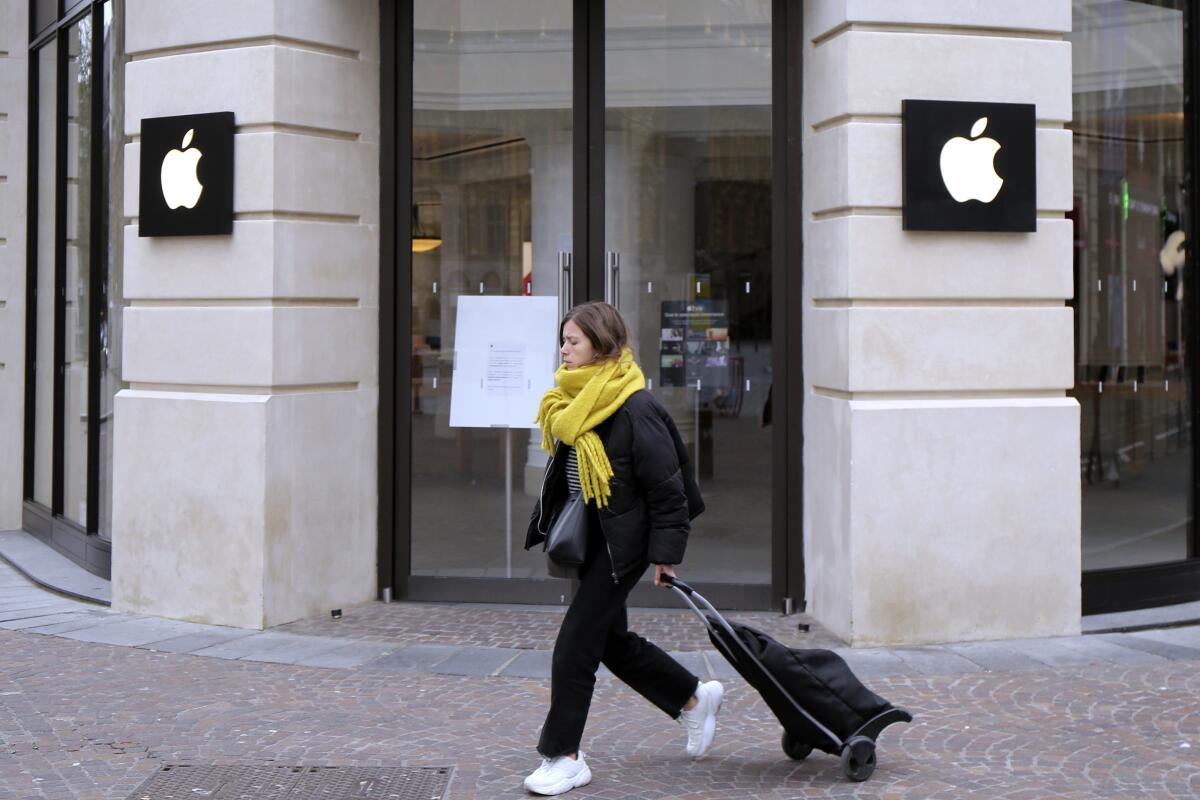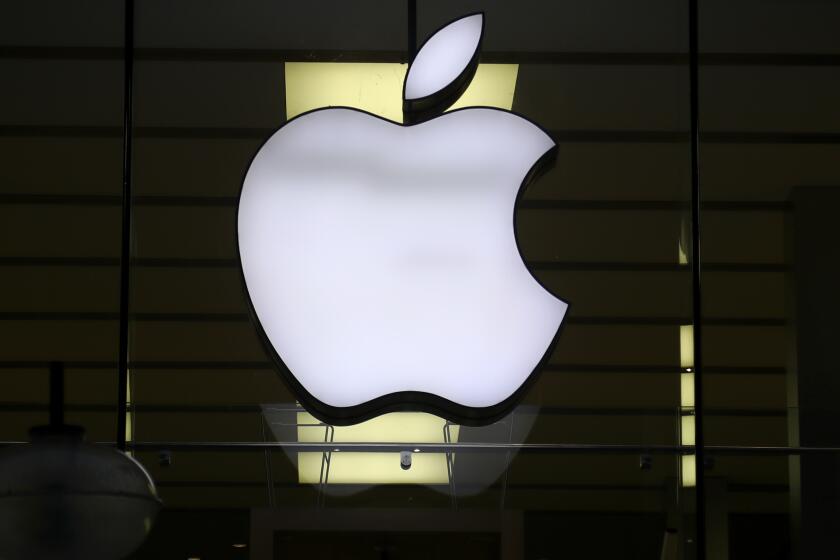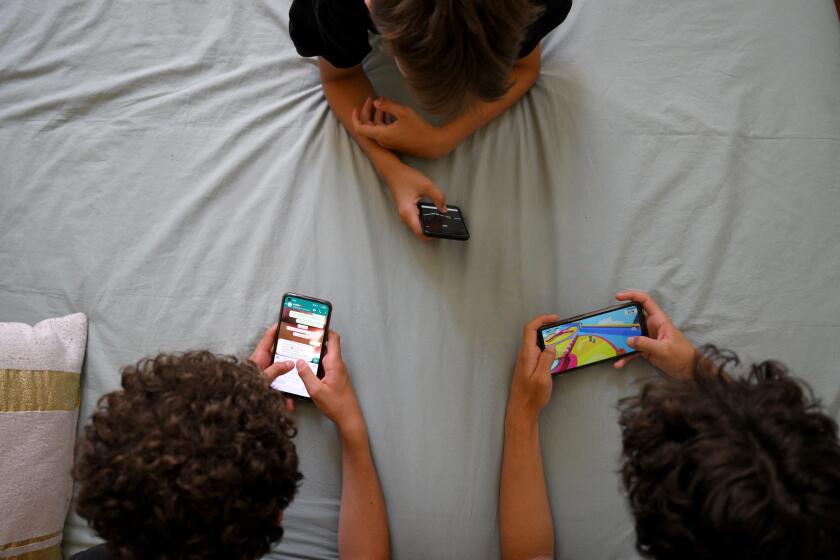Apple’s iPhone 12 emits too much radiation, France says, ordering it off the market

- Share via
PARIS — French regulators ordered Apple to stop selling the iPhone 12, saying it emits electromagnetic radiation levels in excess of European Union standards, a claim the company disputes.
The French government agency that manages wireless communications frequencies issued the order after the iPhone 12 recently failed one of two types of tests for electromagnetic waves capable of being absorbed by the body.
It’s unclear why the phone, which was released in late 2020, didn’t pass the agency’s latest round of tests and why it was only that particular model.
France’s digital minister said the iPhone 12’s radiation was still well below levels that scientific studies say could harm users, and the agency itself acknowledges that its tests don’t reflect typical phone use.
The National Frequency Agency on Tuesday called on Apple to “implement all available means to rapidly fix this malfunction” for phones already in use and said it would monitor device updates. If they don’t work, “Apple will have to recall” phones that have already been sold, it said.
The company insists that the phone complies with EU standards.
The showcase comes as the company has seen its sales drop from last year in three consecutive quarters, partly because iPhones haven’t been selling as well.
The French agency recently tested 141 cellphones and found that when the iPhone 12 is held in a hand or carried in a pocket, its level of electromagnetic energy absorption is 5.74 watts per kilogram, higher than the EU standard of 4 watts per kilogram.
The phone passed a separate test of radiation levels for devices kept in a jacket or in a bag, the agency said.
Radiation limits are set “well below the level at which harm will occur,” and therefore a small increase above the threshold “is unlikely to be of any health consequence,” said Malcolm Sperrin, director of medical physics at Britain’s Royal Berkshire hospital group.
Users of the iPhone 12 should be able to download an update that prevents radiation exposure from surpassing the limit, Sperrin said.
It’s not clear why this particular model appears to throw off higher radiation, but it “may be associated with the initial stage of connection when the phone is ‘looking’ for a transmit/receive signal,” he said.
Apple said the iPhone 12 has been certified by multiple international bodies and complies with all applicable regulations and standards for radiation around the world.
The tech giant said it has provided the French agency with multiple lab results carried out by the company and third-party labs proving the phone’s compliance.
Jean-Noël Barrot, France’s minister in charge of digital issues, told France Info radio that the National Frequency Agency “is in charge of controlling our phones which, as there are software updates, may emit a little more or a little less electromagnetic waves.”
The older children are when they get their first smartphone, the better their mental health later in life. That’s little consolation to teens feeling left out when all their friends are connected.
He said the iPhone 12’s radiation levels are “slightly higher” than EU standards but “significantly lower than levels where scientific studies consider there may be consequences for users. But the rule is the rule.”
The agency’s tests are carried out at a diagnostic lab that uses a liquid-filled mold simulating a human head and body with brain and muscle tissue. Devices transmit at maximum power for the six-minute test, the agency says on its website, acknowledging that the tests “do not reflect the most common use of a telephone.”
During calls, the phone transmits only half the time, when the user is speaking, and calls rarely last six minutes, the agency said. Mobile internet or video use lasts longer, but the phone “rarely transmits more than 10% of the time,” it added.
Cellphones have been labeled as “possible” carcinogens by the World Health Organization’s cancer research arm, putting them in the same category as coffee, diesel fumes and the pesticide DDT. The radiation produced by cellphones cannot directly damage DNA and is different from stronger types of radiation such as X-rays or ultraviolet light.
Start your day right
Sign up for Essential California for the L.A. Times biggest news, features and recommendations in your inbox six days a week.
You may occasionally receive promotional content from the Los Angeles Times.
While mobile phones have been in widespread use for years, studies haven’t shown a clear link to adverse health effects like cancer, headaches and cognitive function, said Ian Scivill, a senior scientist with expertise in radiation at Britain’s Royal Hallamshire Hospital.
Experts have recommended that people concerned about their cellphone radiation exposure use earphones or switch to texting.





